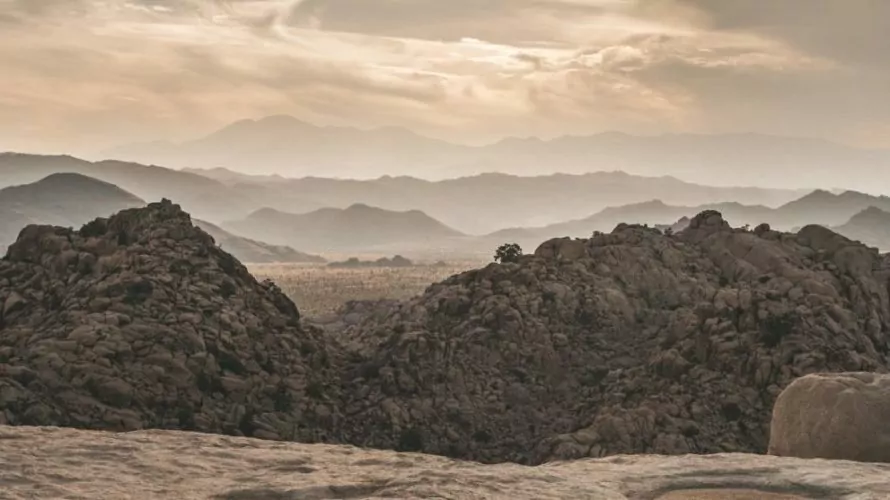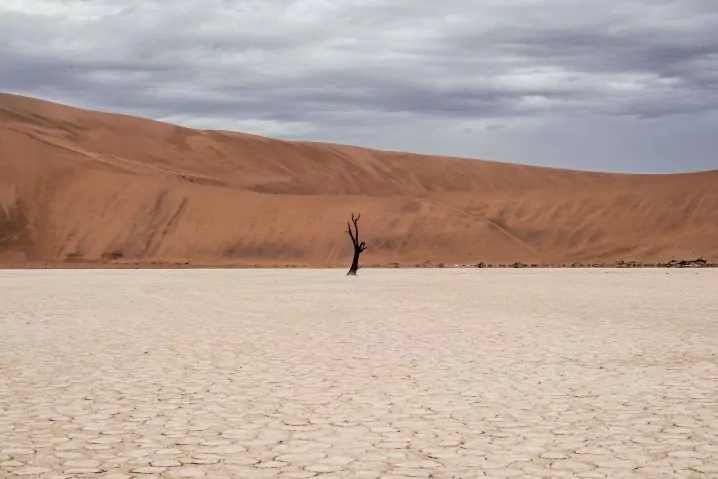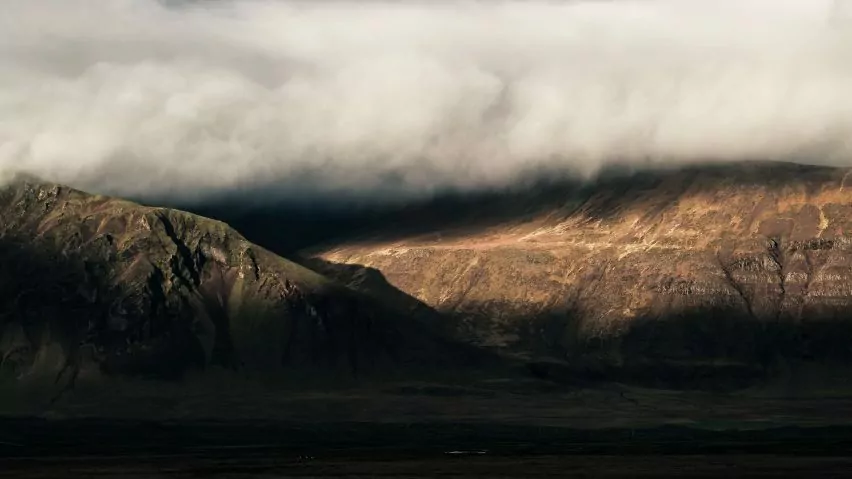The Rain Shadow Effect

The 800,000 acres that make up Joshua Tree National Park are comprised of two deserts: the high Mojave Desert and the lower Sonora Desert. The park receives less than 6 inches of rain a year, but when rain does come, it usually comes all at once. Powerful downpours that lead to flash floods are not uncommon in the late summer. Despite the occasional downpour, the area remains a desert environment.
What Traits Make Up a Desert?

Deserts have low amounts of precipitation. Though it does rain in the desert, rain does not come consistently throughout the year. Deserts also generally have little cloud cover so the sun’s rays easily reach the surface, evaporating any available water. This causes high temperatures during the day. Little cloud cover also results in cold temperatures at night. Without clouds to keep the daytime heat in, heat escapes once the sun sets. Extreme temperature differences between day and night is another characteristic of a desert environment. The extreme heat and lack of water result in soil with low mineral content- another trait of deserts.
What Caused a Desert to Form in Southern California?

There is no denying that Joshua Tree National Park is a desert environment, but how did it come to be? The answer is the rain shadow effect. Just west of the park are mountain ranges with tall mountains. Mount San Jacinto is 10,804ft and Mount San Gorgonio is 11,502ft- the tallest mountain in Southern California. Both mountains are visible from Keys View lookout inside the park. These mountains are responsible for the desert just to the east.
Winter storms that form off the coast, make their way inland and get trapped by the tall mountain ranges. Stuck at the peaks, the clouds release all of their precipitation before moving east. By the time the air reaches Joshua Tree, there is little moisture left.
Later summer storms that do make their way to Joshua Tree are usually tropical storms coming in from the south from the Gulf of California. Because these powerful storms create flash floods, the majority of the water does not have time to be absorbed by the soil.
California is home to quite a few rain shadow- causing mountain ranges. In addition to the San Bernardinos and San Jacinto ranges that cause Joshua Tree’s desert, the San Gabriels and the mighty Sierra Nevada are also ranges that lie parallel to the coast and trap moisture from reaching the dry areas to their east.




